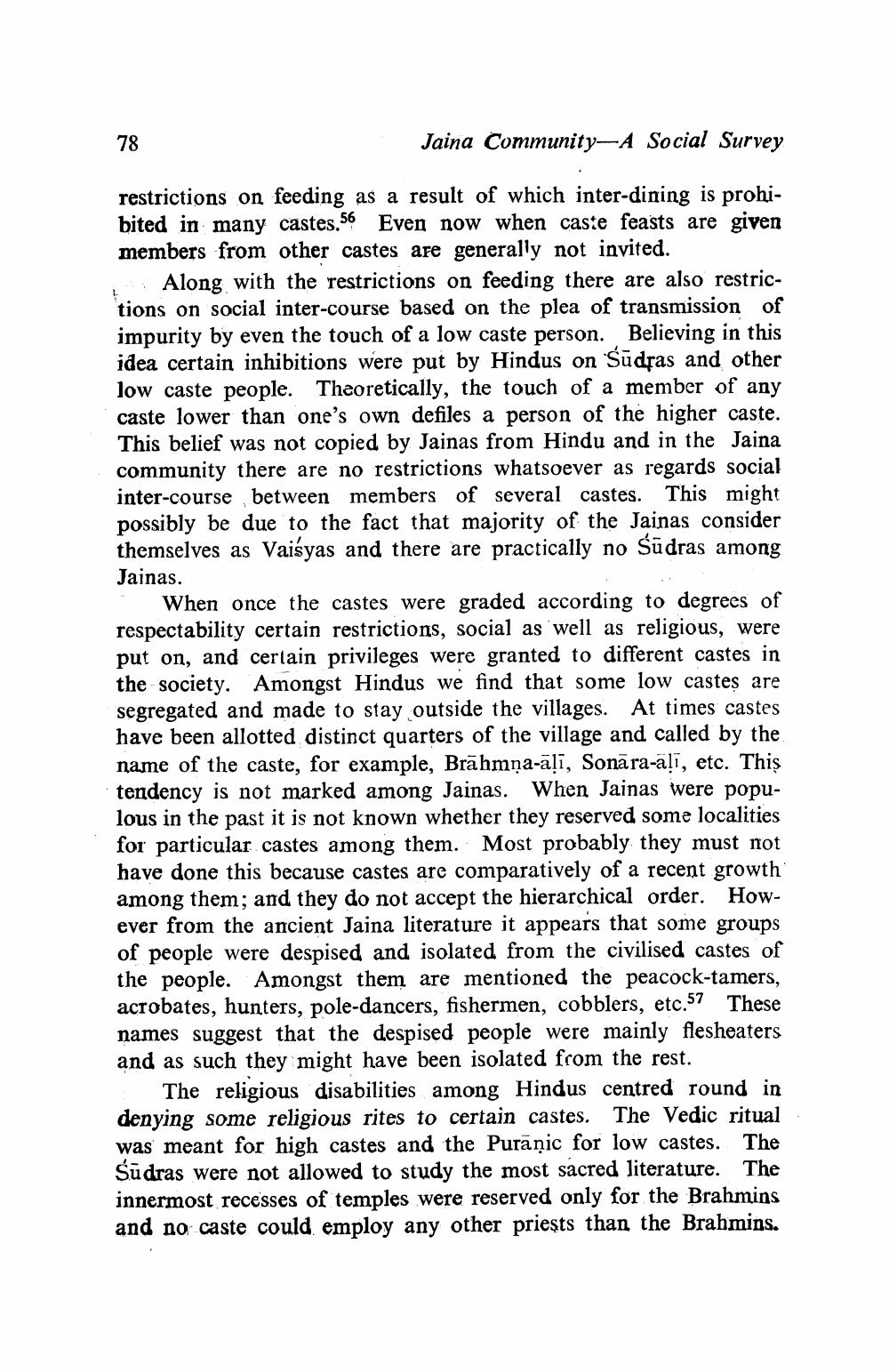________________
78
Jaina Community—A Social Survey
restrictions on feeding as a result of which inter-dining is prohibited in many castes.56 Even now when caste feasts are given members from other castes are generally not invited.
Along with the restrictions on feeding there are also restrictions on social inter-course based on the plea of transmission of impurity by even the touch of a low caste person. Believing in this idea certain inhibitions were put by Hindus on Sūdras and other low caste people. Theoretically, the touch of a member of any caste lower than one's own defiles a person of the higher caste. This belief was not copied by Jainas from Hindu and in the Jaina community there are no restrictions whatsoever as regards social inter-course between members of several castes. This might possibly be due to the fact that majority of the Jainas consider themselves as Vaisyas and there are practically no Sūdras among Jainas.
When once the castes were graded according to degrees of respectability certain restrictions, social as well as religious, were put on, and certain privileges were granted to different castes in the society. Amongst Hindus we find that some low castes are segregated and made to stay outside the villages. At times castes have been allotted distinct quarters of the village and called by the name of the caste, for example, Brāhmņa-alī, Sonāra-alī, etc. This tendency is not marked among Jainas. When Jainas were populous in the past it is not known whether they reserved some localities for particular castes among them. Most probably they must not have done this because castes are comparatively of a recent growth among them; and they do not accept the hierarchical order. However from the ancient Jaina literature it appears that some groups of people were despised and isolated from the civilised castes of the people. Amongst them are mentioned the peacock-tamers, acrobates, hunters, pole-dancers, fishermen, cobblers, etc.57 These names suggest that the despised people were mainly flesheaters and as such they might have been isolated from the rest.
The religious disabilities among Hindus centred round in denying some religious rites to certain castes. The Vedic ritual was meant for high castes and the Puranic for low castes. The Sūdras were not allowed to study the most sacred literature. The innermost recesses of temples were reserved only for the Brahmins and no caste could employ any other prieşts than the Brahmins.




